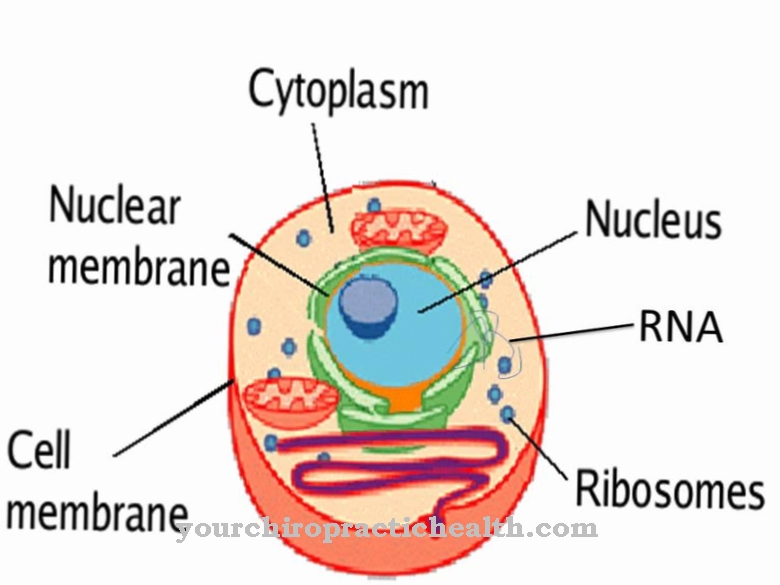The Depth electrode is used for the surgical intervention in the brain in the case of epilepsy. This procedure involves temporarily implanting a thin and flexible rod with multiple electrodes in the deep areas below the cerebral cortex. It can electrically stimulate precisely defined areas in a patient's head. In this way it becomes possible to reduce the strength and frequency of epileptic seizures. Under certain circumstances, the removal of affected cell formations in the brain can also be prepared.
What is a depth electrode?

The implantation of the deep electrode in the brain provides extremely precise information about the origin of the epileptic seizures. It is delimited with an accuracy of a few millimeters. At the same time, this neurosurgical procedure can make a detailed and very reliable prediction about the intensity and characteristics of memory performance after a possible operation.
This minimizes the risk of removing too many nerve cells in the brain during a resection. This is of particular relevance when the focus of an epilepsy-prone zone is very close to areas of the brain that are responsible for memory or even language formation. Of course, all risks should also be weighed that could lead to disorders in the psychological and physical well-being, behavior and cognitive performance of the person being treated.
In addition to the depth electrode, so-called imaging methods, such as magnetic resonance tomography (MRT) and functional MRT, are also of great importance in this regard. They provide information about whether the so-called epileptogenic area (the brain area that causes attacks) is structured like a focal point. Only in this case can it be surgically eliminated. If the seizures originate from scattered groups of cells, surgery is not helpful. In the case of focal epilepsy, a complete half of the brain can be removed in very dramatic cases.
Shapes, types & types
Surgery has excellent options and recognized forms of treatment for these procedures, which are located in highly specialized facilities. They are generally used when drug therapy for an epileptic disease does not lead to the hoped-for results.
According to many estimates, around 30 percent of all patients with focal, that is, focal epilepsy, cannot be completely seizure-free if only drug treatment is used. In non-operable forms of epilepsy, this proportion is less than ten percent. For these reasons there is only very seldom the need to use a depth electrode. However, it has the decisive advantage of being able to derive an electroencephalogram (EEG) from very deep areas of the brain, which allows a spatial evaluation of possible changes.
If a surgical intervention is actually required to overcome epilepsy, the depth electrode can be used to clarify the corresponding risks for the patient.
Structure & functionality
Epilepsy is a chronic disease of the nervous system that is based on changes in the cell structure in the brain. These changes can discharge in epileptic seizures, which are accompanied by the typical jerks all over the body and the risk of suffocation.
From a medical point of view, a fundamental distinction is made between a single epileptic seizure and the nervous disease picture of epilepsy. The epileptic seizure occurs singularly and usually very rarely and only in an extremely small group of patients. It is caused by a disruption of the nerve cells in the brain or the electrical and chemical signals that they send to one another.
A very large number of nerve cells are discharged at the same time, which excessively irritates individual brain areas or the entire brain. This sudden impulse triggers the epileptic fit. These occasional occurrences can be caused by an abnormality in the brain due to injury or inflammation, severe hypoglycaemia, sudden alcohol withdrawal, poisoning, or severe oxygen deficiency.
Medical & health benefits
In contrast to individual attacks, chronic epilepsy is caused by a long-term change in the human brain. In this context, the epileptic seizures occur repeatedly. It is a question of brain damage that can be passed on through heredity or newly acquired.
Focal epilepsy is when the recurring seizures have their focus in a localized area of the brain. A so-called generalized epilepsy, on the other hand, is characterized by the fact that the seizures occur in both halves of the brain.
Acquired (symptomatic) epilepsy is far more common in reality than inherited. With her, the brain is often impaired before or during birth. If it develops later in life, it can be caused by encephalitis, head injuries, ulcers and strokes.
The deep electrode for the treatment of chronic epilepsy is now being used in various areas of surgery. This can be healing (curative) or causal (causal). Use of the deep electrode will ultimately lead to the decision as to whether the affected cell area in the brain is to be removed in the resective procedure, or whether such an intervention is not indicated.
During the resection, the region of the brain from which the epileptic seizures originate is completely cut out. The depth electrode can be used to determine exactly whether the correct area in the brain has been removed. If the epileptogenic focus is in the area of the temporal lobe, i.e. not in the particularly sensitive central and deep brain areas, the removal of the damaged cell formation can lead to a complete absence of all epileptic seizures in around 60 percent of these cases.














.jpg)





.jpg)

.jpg)





